Commandos of 1st Special Service Brigade in Osnabruck, 4 April 1945. Georger Laws, No 5 Army Film & Photographic Unit. Imperial War Museum.
The British Commandos played a crucial role during World War II. Also known simply as the Commandos, they were a specialized force formed during World War II. Their mission? To carry out daring raids and reconnaissance operations behind enemy lines
As France fell in June 1940, the British military recognized the need for irregular warfare units capable of striking at the heart of German-occupied Europe. n 1940, Winston Churchill, the Prime Minister of the United Kingdom, envisioned a small raiding force to disrupt the Wehrmacht and boost British morale. Lieutenant Colonel Dudley Clarke proposed a force inspired by the tactics of the Boer Commandos, emphasizing small-scale raids behind enemy lines.
Initially, these new Commando units comprised soldiers from British Army regiments. Later, many Royal Marines Battalions were reorganized into Commandos, supplemented by members of the Royal Navy and Royal Air Force.
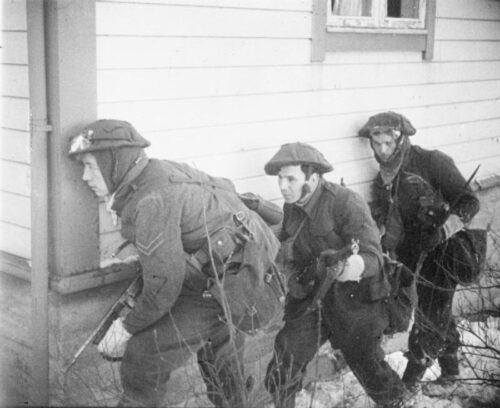
Recruitment and Training
Initially, the Commandos were drawn from volunteers within the British Army who joined the Special Service Brigade. However, their ranks soon swelled to include members from all branches of the British Armed Forces and foreign volunteers from occupied countries such as Greece, France, Belgium, the Netherlands, Canada, Norway, and Poland. Achnacarry, Scotland, became the training ground for these intrepid warriors, where over 25,000 men underwent the rigorous Commando course.
In 1940, Achnacarry Castle, the ancestral seat of Sir Donald Walter Cameron of Lochiel, became part of the Training and Holding Wing for the Special Training Centre Lochailort. Recognizing the need for a centralized training establishment, Brigadier Charles Haydon established the Commando Depot in December 1941. Prior to this, individual Commando Units were responsible for training Commando Personnel.
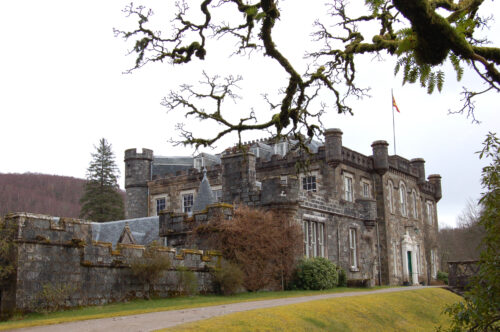
The Commando Depot was redesigned as the Commando Basic Training Centre (CBTC). Under the command of Lieutenant Colonel Charles Vaughan, the first prospective commandos arrived to complete the central course. The CBTC trained both British Commandos and foreign nationals from occupied countries, including France, Greece, Norway, Poland, and even some Germans designated as ‘free Germans.The basic training course lasted approximately six weeks. Due to the sensitive nature of this training, the British Government restricted access to much of the Lochaber region. Non-residents were prevented from crossing the Caledonian Canal to maintain secrecy.
After completing their basic commando training, the Commandos were deployed to various locations for specialized training and operational assignments.
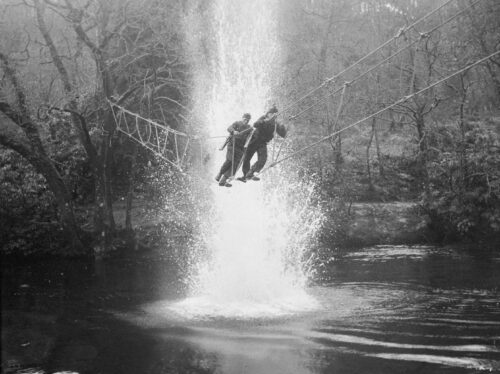
The Commando Order
Allied commandos were feared by the Germans, The Commando Order (German: Kommandobefehl) was issued by the OKW (the high command of the German Armed Forces) on 18 October 1942. This order stipulated that all Allied commandos captured in Europe and Africa should be summarily executed without trial, even if they were in proper uniforms or attempted to surrender. Additionally, any commando or similar unit not in proper uniforms who fell into German hands by means other than direct combat (such as being apprehended by police in occupied territories) were to be handed over immediately to the Sicherheitsdienst (SD) for immediate execution. The order was issued in secret and made it clear that failure to carry out its directives would be considered an act of negligence punishable under German military law. It was later found to be a direct breach of the laws of war, and German officers who executed illegal killings under this order were found guilty of war crimes after World War II.
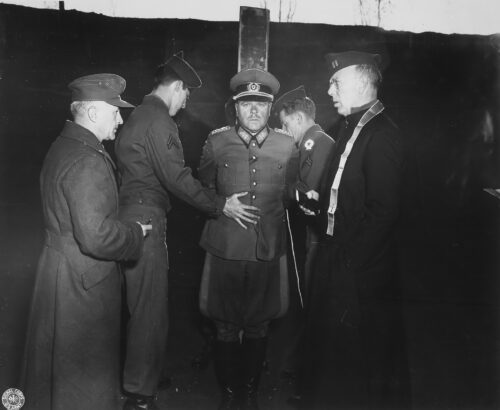
Notable Operations
The Commandos operated across diverse theaters of war, from the Arctic Circle to Europe and from the Mediterranean to South-East Asia. Their missions ranged from small-scale beach landings to large-scale assaults during major Allied invasions. A few of the notable operations were:
St. Nazaire Raid (Operation Chariot): In March 1942, Commandos executed a daring raid on the heavily fortified dry dock at St. Nazaire, France. Their objective: to destroy the dock and prevent the German battleship Tirpitz from using it. Despite heavy casualties, the mission succeeded, dealing a significant blow to the German war machine.
Dieppe Raid (Operation Jubilee): In August 1942, the Commandos participated in the ill-fated Dieppe Raid. Although the operation suffered heavy losses, valuable lessons were learned for future amphibious assaults.
North Africa and Italy: Commandos fought in the North African campaign and the Italian campaign, demonstrating their adaptability and resilience.
Burma Campaign: In the jungles of Burma, Commandos conducted guerrilla warfare against the Japanese. – Their expertise in jungle operations proved invaluable.
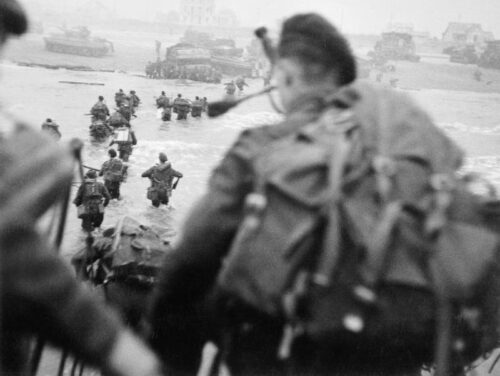
Commandos and the SOE
The Special Operations Executive (SOE) and the Commandos shared a fascinating and intertwined history during World War II. In 1940, under the orders of Winston Churchill, the SOE was established as a top-secret organization. Its mission was to conduct espionage, sabotage, and reconnaissance in German-occupied Europe and support local resistance movements. The SOE aimed to frustrate the enemy through acts of subversion, attacking both their operational readiness and morale. The organization worked closely with local resistance fighters, often operating behind enemy lines.
No. 62 Commando, also known as the Small Scale Raiding Force (SSRF), was a British Commando unit during World War II. Formed around a small group of commandos under the command of the SOE, this elite force carried out a series of daring raids. Their operations included amphibious warfare, close-quarters combat, desert warfare, and direct action. Led by Major Gustavus Henry March-Phillipps, No. 62 Commando executed missions under the operational control of Combined Operations Headquarters. Despite their relatively small size — comprising just 55 commando-trained personnel — they achieved significant impact before being disbanded in 1943.
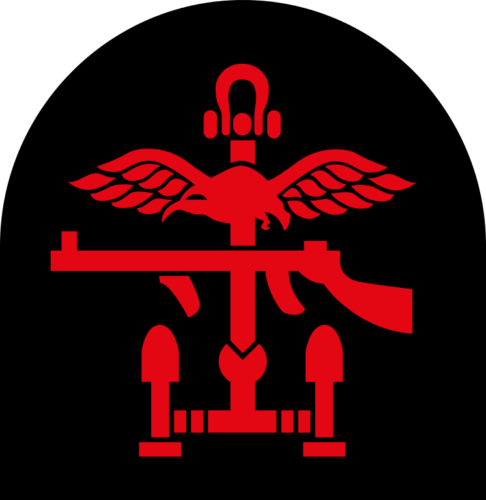
The SOE also collaborated with Commando-trained Norwegian resistance fighters in their operations. In October 1942, the SOE infiltrated a group of these Norwegian Commandos near a hydroelectric plant in Norway. In February of the following year, these SOE-trained Commandos successfully destroyed the facility by covertly placing explosives in key locations.
Colin Gubbins, a key figure in the SOE, drew inspiration from his experiences during the Irish War of Independence, particularly from the tactics employed by the Irish Republican Army (IRA). Gubbins played a significant role in both MI(R) (Military Intelligence, Research) and early SOE operations.
The SOE’s daring and often perilous missions left an indelible mark on history, showcasing the courage and resourcefulness of its agents. Their collaboration with Commandos exemplifies the synergy between specialized military units and intelligence organizations during wartime.
Commandos and Ian Fleming
No. 30 Commando, also known as 30 Assault Unit, was a British Commando unit during World War II whose origins are intriguingly tied to Ian Fleming, the creator of James Bond
In 1942, Lieutenant Commander Fleming proposed the creation of a commando unit to his boss, Admiral John Godfrey, the Director of Naval Intelligence (DNI). Fleming envisioned a unit that would accompany forward troops during attacks on ports or naval installations. Their mission: to capture crucial documents, cyphers, and intelligence. Inspired by a similar German unit, Marine-Einsatz-Kommando Schwarzes Meer, Fleming’s brainchild became 30 Assault Unit.
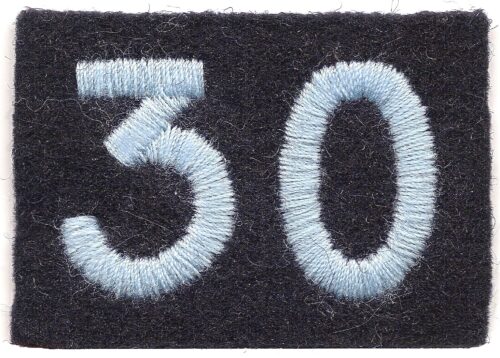
In September 1942, the formation of this unit was officially authorized under the auspices of the Director of Naval Intelligence. Initially known as the Special Intelligence Unit, it comprised four troops: 33 (Royal Marines), 34 (Army), 35 (Royal Air Force), and 36 (Royal Navy). Fleming played a pivotal role in organizing and shaping this covert force.
30 Assault Unit operated ahead of advancing Allied forces, infiltrating enemy territory by land, sea, or air. Their objective: to capture critical intelligence—codes, documents, equipment, or personnel. These commandos often worked closely with the Intelligence Corps’ Field Security sections. They operated independently, gathering information from captured facilities across various theaters of war.
During the Operation Torch landings in November 1942, they landed west of Algiers, Algeria, and successfully located the Italian naval headquarters. Their exploits were daring and essential, contributing significantly to the Allied cause.
Fleming drew from his experiences with 30 Assault Unit when creating the iconic secret agent character James Bond. The real-life adventures of these commandos were an inspiration in Fleming’s novels.

Legacy
After the war, most Commando units disbanded. Only three Royal Marines Commandos remained, along with one brigade supported by Army elements.
The modern Royal Marine Commandos, Parachute Regiment, Special Air Service (SAS), British Army Commandos, and the Special Boat Service (SBS) trace their origins to the Commandos. Even beyond Britain, their influence extended to mainland Europe and the United States, inspiring units like the French Commandos Marine, Dutch Korps Commandotroepen, Belgian Special Operations Regiment, Greek 1st Raider–Paratrooper Brigade, and the U.S. Army Rangers and Green Berets.
The British Commandos exemplified courage, resourcefulness, and audacity. Their legacy lives on, a tribute to the indomitable spirit of those who dared to be the first into battle, striking fear into the hearts of their enemies. Their legacy endures.

